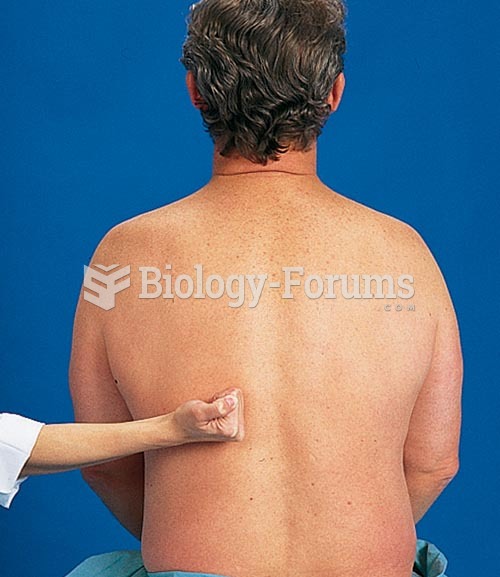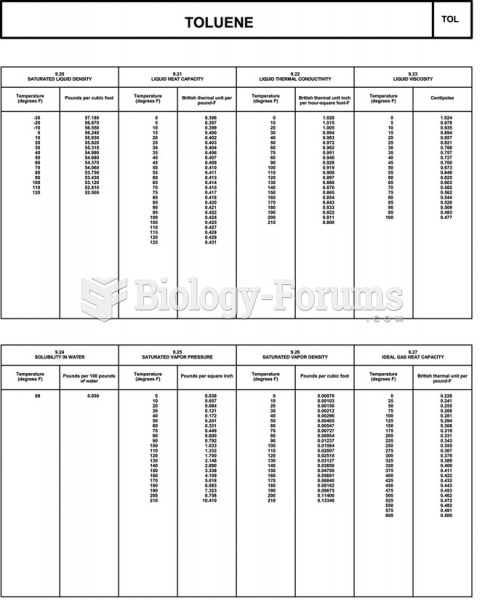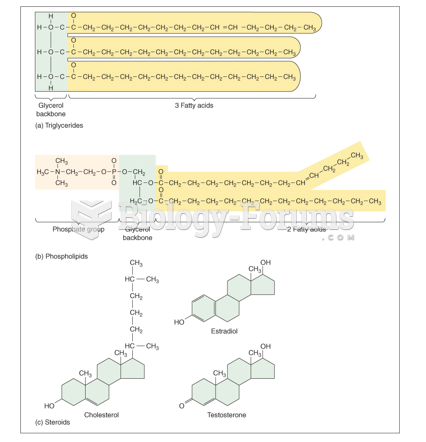|
|
|
If you use artificial sweeteners, such as cyclamates, your eyes may be more sensitive to light. Other factors that will make your eyes more sensitive to light include use of antibiotics, oral contraceptives, hypertension medications, diuretics, and antidiabetic medications.
Cyanide works by making the human body unable to use oxygen.
Blood is approximately twice as thick as water because of the cells and other components found in it.
In the United States, an estimated 50 million unnecessary antibiotics are prescribed for viral respiratory infections.
Dogs have been used in studies to detect various cancers in human subjects. They have been trained to sniff breath samples from humans that were collected by having them breathe into special tubes. These people included 55 lung cancer patients, 31 breast cancer patients, and 83 cancer-free patients. The dogs detected 54 of the 55 lung cancer patients as having cancer, detected 28 of the 31 breast cancer patients, and gave only three false-positive results (detecting cancer in people who didn't have it).
 Competition can be (a) direct, or (b) indirect interaction among individuals of the same or differen
Competition can be (a) direct, or (b) indirect interaction among individuals of the same or differen
 A multiport fuel injector. Notice that the fuel flows straight through and does not come in contact ...
A multiport fuel injector. Notice that the fuel flows straight through and does not come in contact ...





